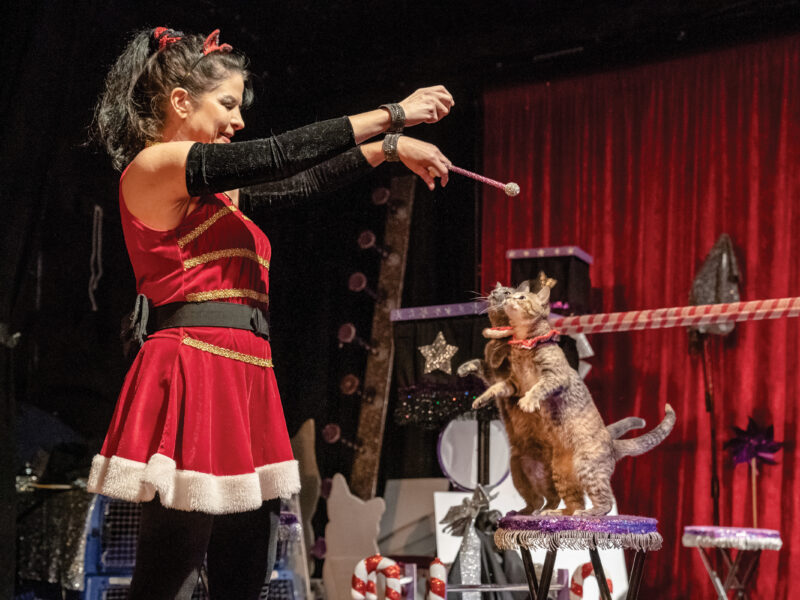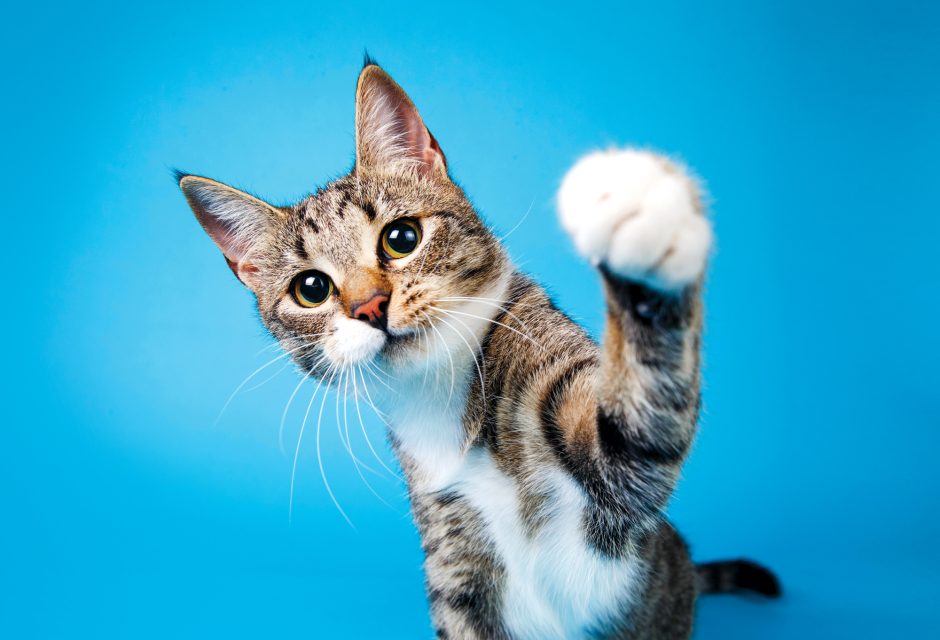
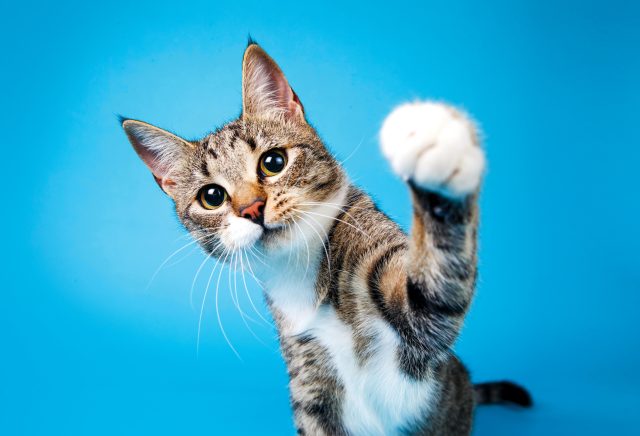
Polydactyl Cats: History, Traits and Famous Example of Felines with Extra Toes
Fascinated by felines with extra toes? Discover everything you ever wanted to know about polydactyl cats!
Let’s face it. As cat lovers, many of us are a little obsessed with cat paws. Yes, those toe beans are irresistibly adorable. Look closely, and you may discover some cats have a little more to offer in the paw department: extra toes. This endearing physical trait, called polydactylism, is rare—it’s estimated that only about three percent of cats worldwide have extra toes.
What is a Polydactyl Cat?
A polydactyl cat, in simplest terms, is a feline with extra toes. Most cats have five toes on their front paws and four on the back. Polydactyl cats—thanks to a genetic mutation—have more toes on one or more of their paws. It’s possible, but very rare, for a cat to have extra toes on all four paws. Polydactyl cats may have one or two extra toes, while others might have several additional digits, some even resembling a thumb. Typically, their paws appear larger and more distinctive. It’s a condition also known as hyperdactyly.
Different Types of Polydactyly In Cats
There are three types of polydactyl paws:
- Postaxial: The extra toes are located on the outside of the paw.
- Preaxial: The extra toes are on the inside of the paw. This is the most common form.
- Mesoaxial: The extra toes are throughout the paw. This is the rarest form.
It’s likely that a spontaneous occurrence of this genetic mutation led to the beginning of polydactyl cats. For this reason, pinpointing when they first appeared is impossible; however, historical references suggest that polydactyl cats have been around for centuries.
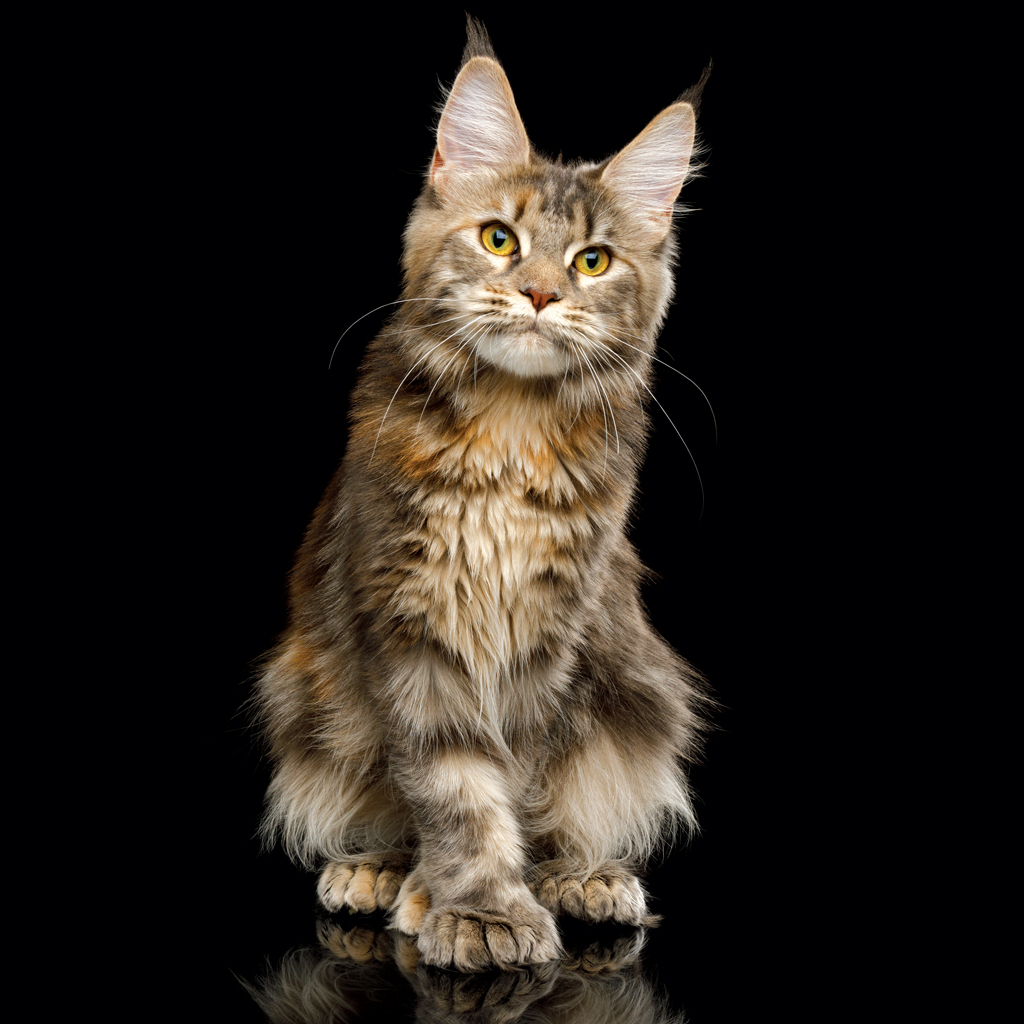
Photo Seregraff/Bigstock
The Genetics Behind Polydactyl Cats
We really can’t discuss polydactyl cats without venturing into the world of genetics. Here’s what happens, genetically, to result in a cat with extra toes.
First, think of genes as a set of instructions. It’s these instructions that determine how a cat develops and functions. DNA is the code in which those instructions are written.
Now, like people, cats have two sets of instructions for most traits. One set comes from mom, and the other from dad.
If we’re talking about toes, the usual instruction that comes from both parents would be, “let’s have five toes on each front paw and four on each back paw.” That is the norm.
Sometimes, however, there’s a change in the instructions—also known as a mutation. In the case of a polydactyl cat, the instruction might be, “let’s have more than five toes on each paw.”
If a cat were to get normal toe instruction from one parent, and a polydactyl toe instruction from the other, they might end up with extra toes, but it happens infrequently. However, if both parents offer polydactyl toe instructions, the cat is likely to have some extra toes.
Variations and Implications
Polydactylism shows up in many variations. There is no uniformity whatsoever to the mutation, and that randomness is part of what makes these cats so distinctive.
Even though polydactylism is the result of a genetic mutation, these cats are not more prone diseases. It is a harmless mutation, so basic care, nutrition, and veterinary oversight for polydactyl cats are the same as they are for all cats.
Polydactyl Cats’ Place in History
Some of the earliest documented instances of polydactyl cats are through the seafaring communities. This association indicates that polydactylism in cats may have been noticed as far back as the Age of Exploration, which spanned the 15th to 17th centuries.
Sailors encountered these cats during their travels, and those extra toes caught their eyes. They assumed polydactyl cats had a unique advantage when it came to both hunting and climbing—both important on the high seas. Was it true? Well, polydactyl cats’ paws are wider and larger. It’s feasible that they could have an edge when it comes to climbing, balancing, and hunting.
Rodent infestations were common on ships and food supplies were considered precious cargo. Failure to control a ship’s rat population would result in food spoilage. As for climbing, there are so many different vertical structures on a ship that agility and dexterity were important for people and for cats.
Finally, sailors are known to be a superstitious bunch, and they considered these cats to be a good omen. As a result, polydactyl cats became a mainstay on many ships.
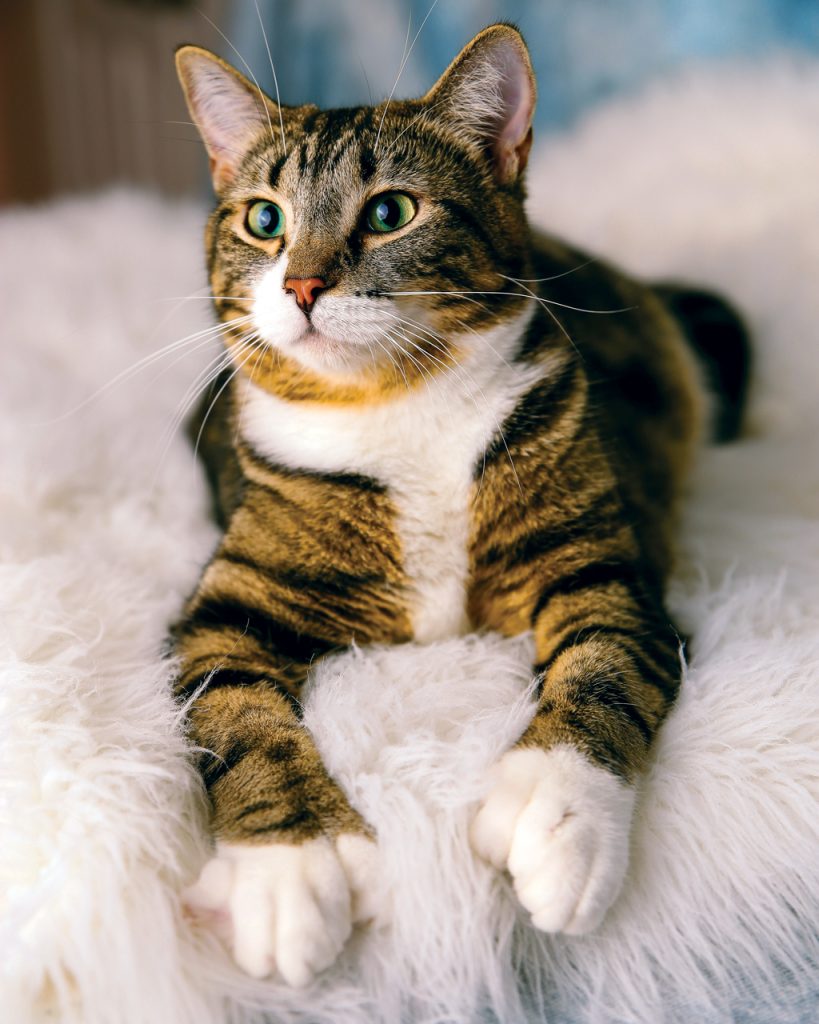
Photo Larissa Gordon/Shutterstock
Famous Polydactly Cats: The Hemingway Cats
There is no way to discuss feline polydactylism without bringing Ernest Hemingway and his cats into the mix.
The famed American novelist was a true cat man and an avid sailor. He lived in Key West, Florida and was fond of sailing throughout the region, as well as Cuba and the Caribbean. He owned several boats during his lifetime and spent considerable time on them.
His love of cats is well-documented, both personally and in many of his literary works. He developed a special fondness for polydactyl cats after receiving one as a gift from a sea captain. He named the cat Snow White and, while breeding records don’t exist, it’s quite evident that she produced some kittens as she roamed freely around his property.
After his death in 1961, the Key West residence was restored and ultimately transformed into the Ernest Hemingway Home and Museum. It remains a popular attraction to showcase the life and work of Hemingway and is still home to a colony of close to 50 cats—many of whom are polydactyls likely descended from Snow White.
Hemingway’s cats roam freely on the home’s grounds where they are cared for by museum staff. The colony of largely polydactyl cats is a unique and endearing part of the pioneering writer’s legacy.
The World Record: Meet the Cat With the Most Toes
On the subject of famous cats, Jake, a Canadian cat, made it into the 2002 Guinness Book of World Records for most toes on a cat. He had the most toes ever recorded on a cat: a whopping 28 toes in total. Jake’s record was tied in 2018 by a cat from Minnesota aptly named ‘Paws.’
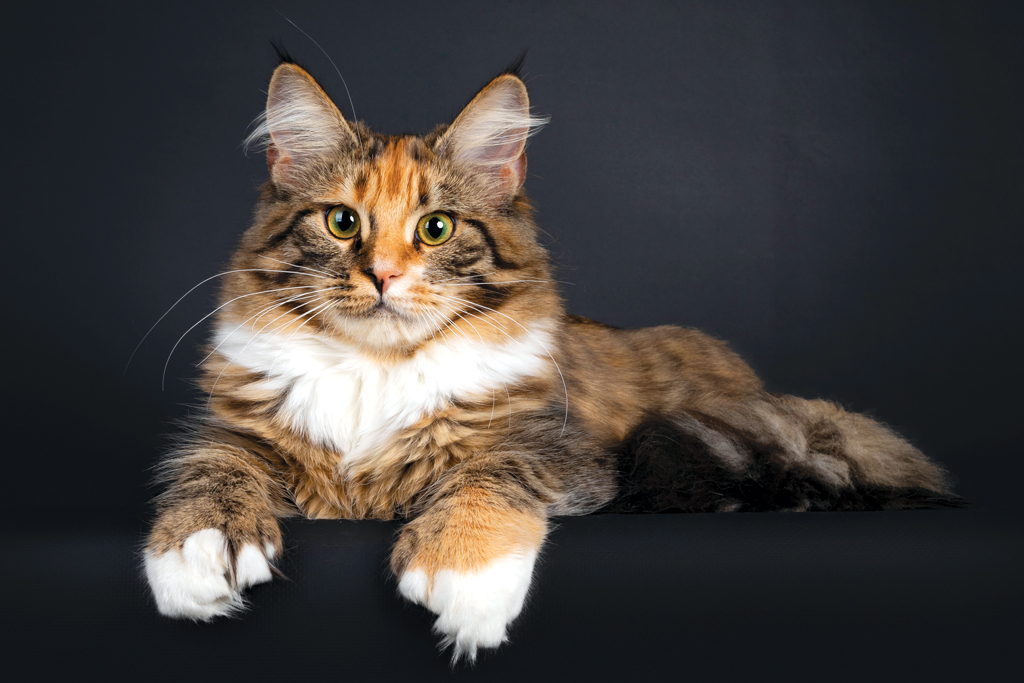
Photo Nynke van Holten/Shutterstock
What Cat Breeds are Affected by Polydactylism?
Polydactylism is not specific to any breed. It can occur in cats of various breeds as well as in mixed-breed cats. However, there are certain breeds where polydactylism appears to be more common, most notably Maine Coons. It’s possible that the early seafaring travels of these cats played a role in that distinction, as Boston was a busy port for ships.
Geographically, this genetic mutation could pop up on any cat in any location, though they tend to be most often found in Maine, other parts of North America, Wales, and Western England. Here again, cargo ship trade routes are a likely cause behind these trends.
Care Considerations for Polydactyl Cats
The extra toes of polydactyl cats do not usually cause them any problems. They require the same kind of care as any other cat. Nail trims could take a bit longer due to extra toes and the fact that sometimes those extra nails grow faster because they aren’t hitting the ground correctly. A scratching post or board that allows these special cats to scratch from various angles is ideal.
More toes? As any cat lover will tell you, that’s just more to love.
This article originally appeared in the award-winning Modern Cat magazine. Subscribe today!
Join the newsletter and never miss out on cat content again!
"*" indicates required fields
By clicking the arrow, you agree to our web Terms of Use and Privacy & Cookie Policy. Easy unsubscribe links are provided in every email.





